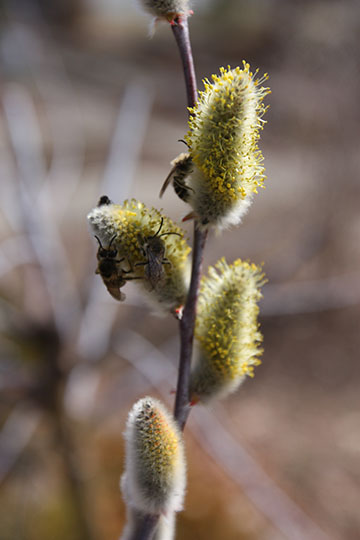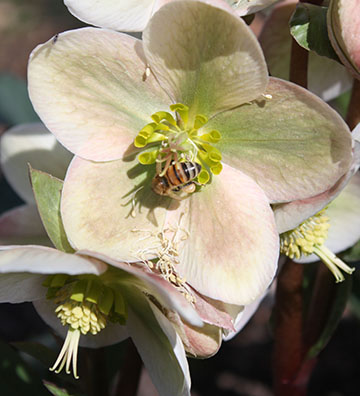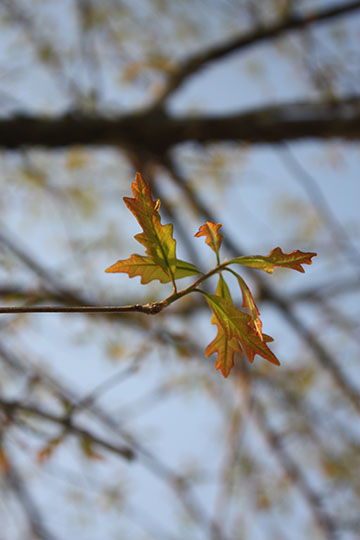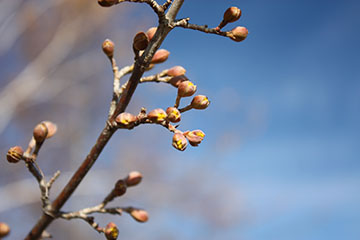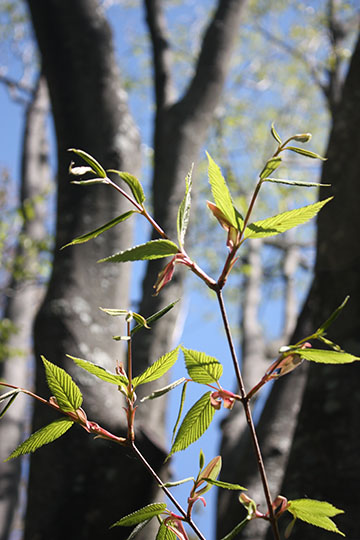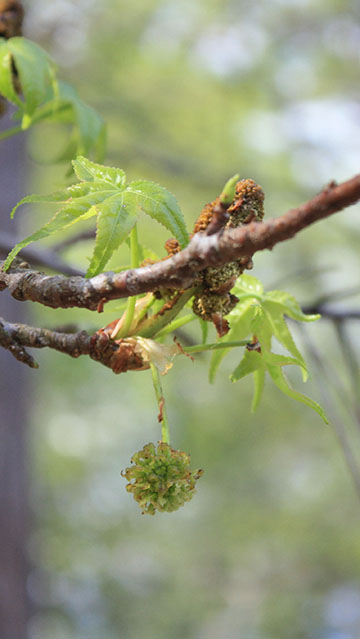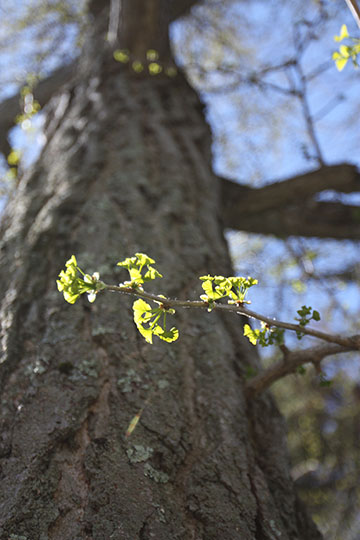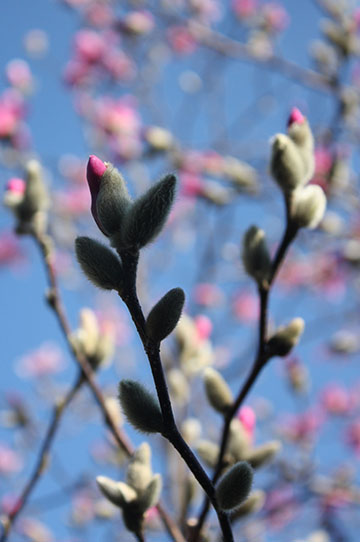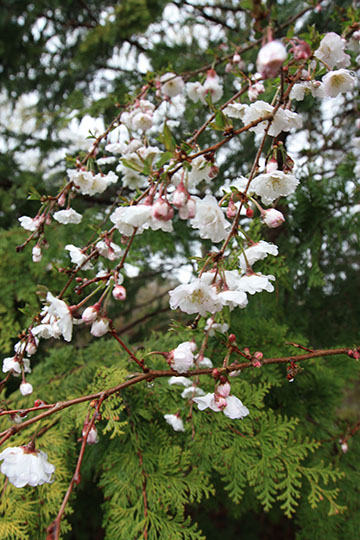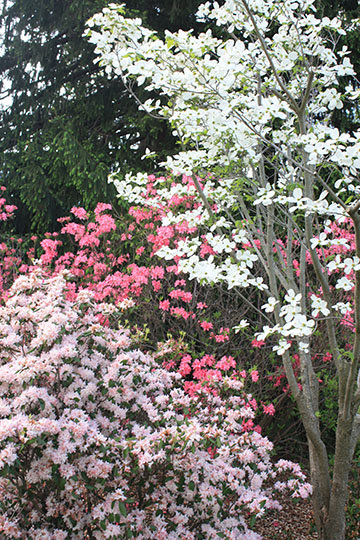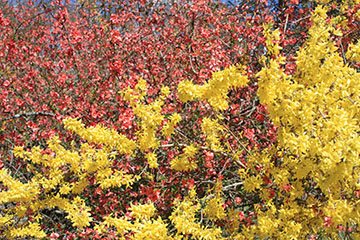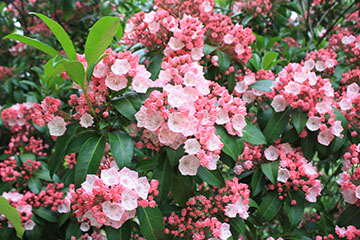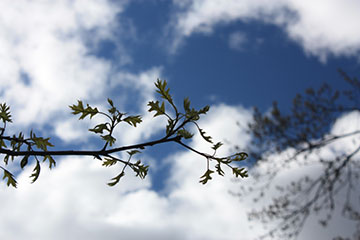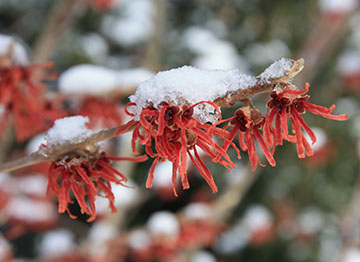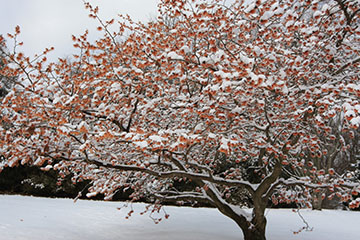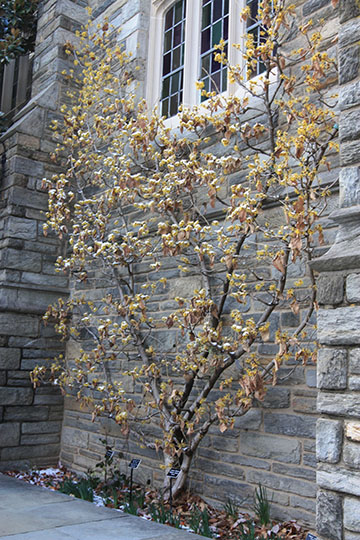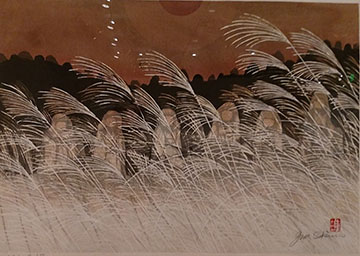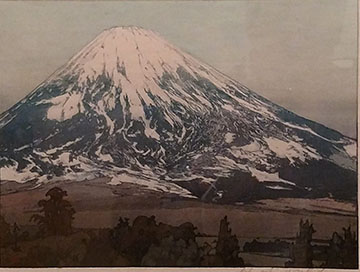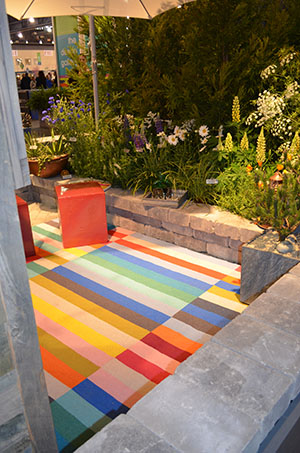Winter 2017 Newsletter
|
April Showers Bring May Flowers
A Rhyme's Changing Rhythms
The poem "Sweet April Shower Do Spring May Flowers" was written by the English poet and farmer Thomas Tusser in 1557. This well-known verse has been passed down for centuries, its altered syntax being a rhyme widely familiar to both children and gardeners. The rhythms of spring, however, are certainly not what they used to be. Perhaps today’s reality is best reflected in a tercet Haiku; Warm temperatures, Now in March and February, Bring April Flowers.
Documenting the rhythms of nature is known as phenology, the ecological study of the seasonal rhythms of plants and animals. One aspect of plant phenology is the recording of the dates when flowers first bloom and leaves emerge in the spring. The earliest records of bloom dates and seasonal rhythms were recorded over 4000 years ago in China in the 21st century B.C.! Closer to home, and more contemporaneous, though still historical, are the journals of nature writers Henry David Thoreau and Aldo Leopold. Thoreau, the author of Walden, began observing bloom times in Concord, Massachusetts in 1852 and Leopold, author of A Sand County Almanac in Wisconsin in 1935.
Data in Massachusetts and Wisconsin shows that record-breaking temperatures in recent years have resulted in the earliest flowering times in recorded history for dozens of spring-flowering plants. Thoreau’s records from 1852 to 1858 show that the mean spring temperature in Concord, Massachusetts was 41.9 degrees, and the mean first-flowering date for species studied was May 15th. However, from 2004 to 2012, the mean spring temperature in Concord was 47.8 degrees. In 2012, a mean temperature of 51.8 degrees caused an April 24 first-flowering date! In 1852, Thoreau noted that the Highbush Blueberry (Vaccinium corymbosum) flowered in mid-May. In 2012 highbush blueberries flowered in early April, shifting their flowering time by five or six weeks since the time of Thoreau!
I vividly remember the extremely mild winter of 2012. While, witchhazel flowers (Hamamelis) can withstand alternate freezing and thawing, the precocious early buds of fruit trees will die with frozen temperatures. Another tough tree that is resistant to erratic temperatures is the Cornelian Cherry Dogwood (Cornus mas). In fact, I photographed opening buds of Cornus mas on January 26th at Tower Hill Botanic Garden in Boylston, MA! Another Cornelian Cherry was still in full bloom in South Kingston, RI on March 1st, a month early. The exceptionally early season and mild temperatures allowed a very early start, a month ahead of normal, to commence building and planting a new garden. 2017 has already broken records for warm February temperatures. February’s warmth was celebrated on all of the news networks showing people shedding heavy winter coats and soaking up the sun’s warmth. This “false spring” was followed by a wallop of winter cold and snow. Climate change’s erratic weather was certainly more than a cautionary tale for the gardeners and farmers who lost crops of peaches and apples last year.
Cornell University, under the leadership of David Weinstein, initiated a citizen’s science network of plant phenology observers, Project Bud Break, climatechange.cornell.edu/project-bud-break to monitor effects of global climate change on native plants in central New York. Observations made by network members will help us better understand how global warming affects plant flowering and growth. When Bud Break was started around 2008, there was no other citizen science program for collecting plant phenology observations. Not long after Bud Break was started, the National Phenology Network established their own citizen’s phenology program, Nature's Notebook and Project Budburst, budburst.org. A haiku homage to the mission of plant phenology: People watching plants, Contributing to research, Join Project BudBurst.
Droughts are as devastating to gardeners and farmers as are bud killing frosts. Spring droughts are especially insidious. The promise of April Showers bringing May Flowers is so deeply ingrained in our brains, because we know that warm temperatures and these early spring rains hydrate and nourish the roots of young plants encouraging growth and eventual flowers. It becomes especially important to observe our environment’s phenology and local rainfall. Transplanted plants establish themselves over varying lengths of time. A daylily may be throughly established within one growing season, while trees take longer, usually three years. A newly planted tree will still need supplemental watering and care in the following years, since its roots are still localized and are susceptible to lack of rain. As soon as the new leaves have unfurled and growth starts to elongate, it is critical that trees have enough water. Water weekly and deeply, when cumulative rainfall is less than one inch per week. Hand water with a hose or bucket, slowly applying at least five gallons of water, distributing the water over the area of the root ball. This watering to establish newly planted trees needs to continue weekly, even into the fall to ensure proper dormancy.
Gardeners are keenly vigilant and observant by nature, tending new seedings, plucking weeds or scouting for pests. As Thoreau was a chronicler of his environment, we too must be alert and knowledgeable about the effects of climate change. By being observant to seasonal phenology, we can sustain beauty and joy in our garden brought by April Shower and the May flowers that follow and continue throughout the year.
Warren Leach
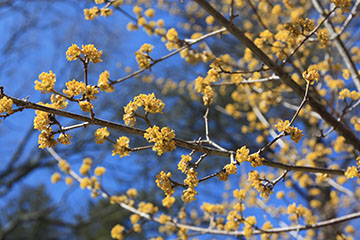 |
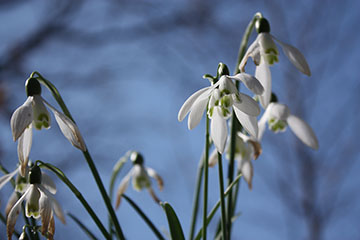 |
Cornelian Cherry (Cornus mas) now in bloom |
Snowdrops (Gallanthus nivalis) now in bloom |
|
|
|
|
Black Willow (Salix nigricans) in bloom with March honeybees |
Hellebore in bloom with March honeybee |
|
|
|
|
Emerging Oak Leaves |
Winter Buds Beginning to Open |
|
|
|
|
Emerging Spring Leaves |
Sweet Gum (Liquidambar styraciflua) leaves emerging in spring |
|
|
|
|
Maidenhair Tree (Ginkgo biloba) leaves emerging in spring |
Magnolia x 'Leonard Messell' buds break in April |
|
|
|
|
Prunus x 'Hally Jolivette' blooms in April |
May Flowers - Dogwood and Azaleas |
|
|
|
|
Forsythia and Quince in Early Spring |
Mountain Laurel blossoms |
|
|
|
|
Oak Leaves at the end of April |
|
ARTFUL INSPIRATIONS & HORTICULTURAL REFLECTIONS AT MUSEUMS, FLOWERS SHOWS AND BOTANIC GARDENS |
Winter is the season for Flower Shows. It is the horticultural spectacle that draws gardeners like moths to a flame. There is nothing like experiencing the sweet scents and vibrant colors of flowers in bloom in the bleak of winter; whether tropical citrus in a greenhouse or conservatory or hardy trees, shrubs, bulbs and perennials coaxed into early, out-of-season bloom and displayed in a convention center or exhibition hall. Debi and I have deep connections to Flower Shows in Philadelphia and Boston. In fact we met at the Preview Party of the New England Spring Flower Show in Boston in 1988
In winter, even though our nursery greenhouse is filled with our ‘plant pets’, tropical plants collected over many years and used in our seasonal display gardens, we yearn for additional horticultural and artistic stimulation in the winter. In early February, we traveled to Williamstown and North Adams, MA to visit the Clark Art Institute and MassMoca. It was the beginning of several trips to favorite places, stimulating art, new experiences and meeting new people who share our passion for growing plants, creating gardens and adding beauty into the world.
The Clark Institute had built a striking new addition since we were last there, and in it was an exhibition of 19th and early 20th century Japanese Color Woodblock Prints. The colorful prints of landscapes were truly amazing in technical detail and artistic expression. The permanent collection at the Clark is always a treat and we had come to pay tribute to a favorite John Singer Sargent painting. We continued on to North Adams, nestled in a beautiful landscape flanked by the Adirondack and Green Mountains, an inspiration to artists. However, I am still processing the experience of the Sol LeWitt Wall Drawing Retrospective at MassMOCA. It may have been serendipity and a prescient vision to the Dutch theme at the Philadelphia Flower Show, where artist Piet Mondrian’s color style was referenced in several exhibits.
The month of February has proved to be the warmest ever, breaking all records. We traveled to Wave Hill Botanic Garden in the Bronx and the Scott Arboretum of Swarthmore College in Pennsylvania on February 8th. It was 65 degrees at Wave Hill and 70 at the Scott Arboretum! The witchhazels were reveling in the warmth and in full bloom. At Wave Hill, in the foreground of the view to the Hudson River and Palisades, was a striking, colorful specimen with fragrant orange flowers, Hamamelis x 'Orange Beauty'. The collection of witchhazels at Swarthmore is extensive with many cultivars that were new to me. We inhaled the sweet scent of Hamamelis 'Strawberries and Cream' and marveled at a magnificently espaliered Hamamelis mollis 'Early Bright'. The next day it snowed! A fresh mantle of white covered the landscape at Longwood Gardens, accentuating the witchhazel blooms and sculptural forms of weeping beech (Fagus sylvatica 'Pendula') and Kousa dogwood (Cornus kousa). Winter’s chill disappeared on entering through the threshold of Longwood’s conservatory. Longwood’s elaborate glass houses always exhibit a peerless display of horticulture and exquisite artistic compositions of plants.
Our last day in Pennsylvania, took us to the new Museum of the Barnes Foundation in downtown Philadelphia. This amazing collection includes more than 180 Renoirs, 60 Cezannes and an amazing variety of other impressionist paintings. We immersed ourselves in the colorful images of people, gardens and flowers. At the end of the day it was a Miro mural and a Van Gogh portrait of flowers that left the most lasting images.
The first weekend in March found us in Burlington, Vermont to speak at the Vermont Flower Show. It was still winter, 5 degrees at 10:00 a.m. when we entered the show! The Vermont Flower Show is a welcome respite from winter, displaying a colorful composition of forced flowering trees, shrubs, perennials and bulbs. It was a delight to embrace the sweet fragrance of flowering crab apples and more witchhazels (Hamamelis vernalis 'Amethyst'). The show is a collaboration of Green Works, the Vermont Landscape and Nursery Associations. The organization works together to build one spectacular 12,000 square foot garden. This year’s theme was Neverland, creating Peter Pan’s magical garden world. The Vermont Show is an inspiration for all gardeners, offering educational talks and a diverse trade show. It is a biennial event and well worth the wait every two years
The finale of our winter horticultural excursions is a perennial favorite, a March trip to Philadelphia when we tour the Pennsylvania Academy of Fine Arts in the morning and then step across the street for the Members Opening of the The Philadelphia Flower Show of the Pennsylvania Horticultural Society. We discovered the Pennsylvania Academy of Fine Arts a few years back when they offered an exhibit on the Artist in the Garden, and it has been an annual event ever since. Their permanent collection offers several lovely landscapes. This year, the special collection featured art of World War I.
This year, the theme for the Philadelphia Flower Show is Holland. The show was absolutely magnificent with stunning gardens, water features, sculpture, windmills and colorful flower arrangements. Orange was the color of the Show to honor the House of Orange. Many exhibits also included bicycles, as there are more bicycles in the Netherlands than there are people. There were masses of flowering tulips, daffodils, and hyacinths forming colorful tapestries of fragrant blooms. The show will be on display through Sunday, March 19th. And closer to home the The Boston Flower and Garden Show will be at the the Seaport World Trade Center in Boston March 22 -26 for even more early spring experiences.
Warren Leach
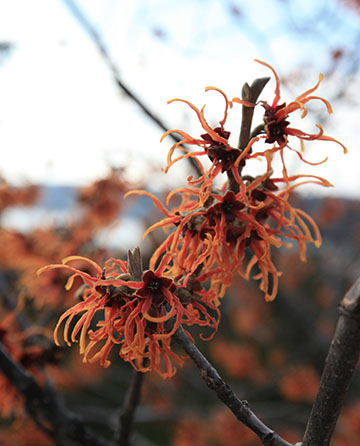 |
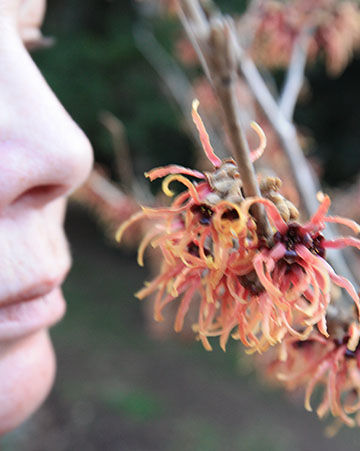 |
Hamamelis x 'Orange Beauty' at Wave Hill Botanic Garden |
The sweet scent of Hamamelis 'Strawberries and Cream' |
Hamamelis 'Danny' in snow at Swarthmore College
|
|
Hamamelis x intermedia 'Jelena' in snow at Longwood Gardens |
Hamamelis mollis 'Early Bright espalied on a courtyard wall at Swarthmore College |
|
|
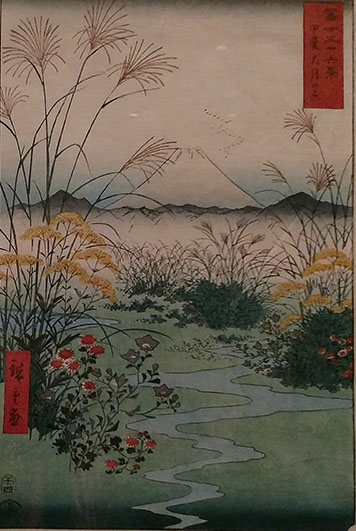 |
Six Jizo at Yamashina by Sekino Jun Ichiro (1970)
|
Japanese Wood Color Block Print at the Clark Art Institute in Williamstown |
Fujiyama from Gotemba by Yoshida Hiroshi (1929) |
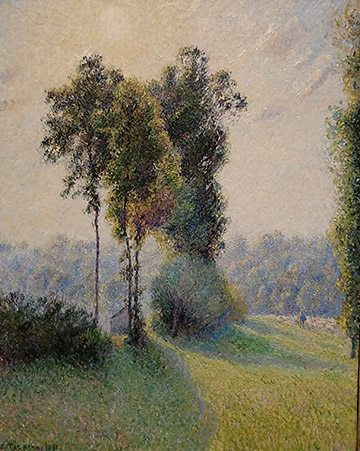 |
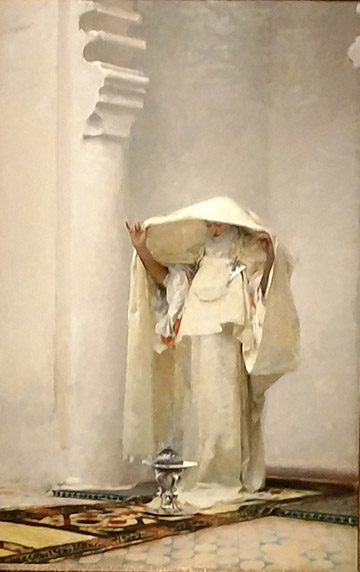 |
Landscape at Saint-Charles near Gisors, Sunset by Camille Pissarro at the Clark Art institute |
Smoke of Ambergris by John Singer Sargent at the Clark Art Institute |
 |
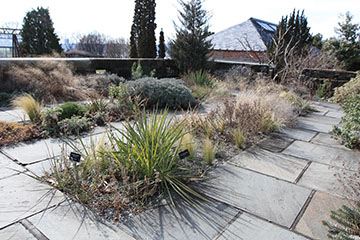 |
Sol Le Witt at Mass MOCA |
Wave Hill Botanic Garden on a Warm day in February |
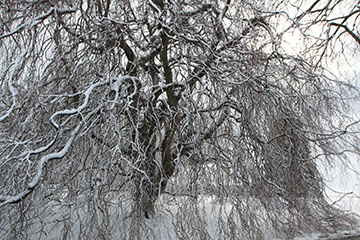 |
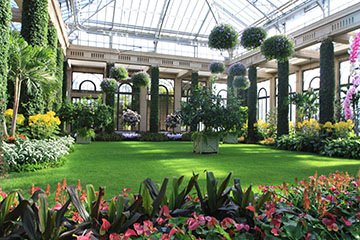 |
Beech silhouette in snow at Longwood Gardens |
The Main Conservatory at Longwood Gardens |
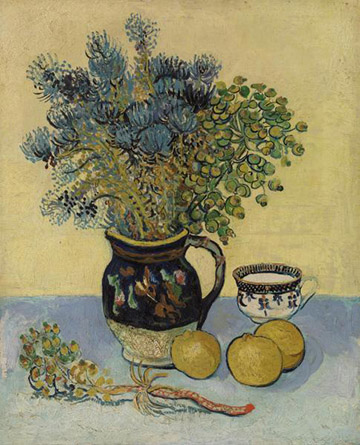 |
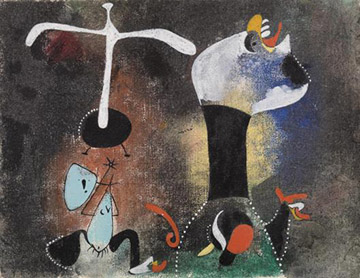 |
Nature Morte (Still Life) by Vincent van Gogh (May 1888) at the Museum of the Barnes Foundation in Philadelphia |
Groupe de Femmes (Group of Women) Joan Miro (July 1938) at the Museum of the Museum of the Barnes Foundation in Philadelphia |
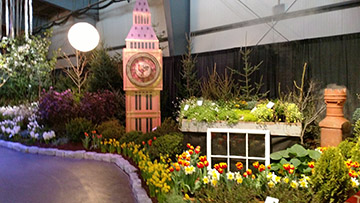 |
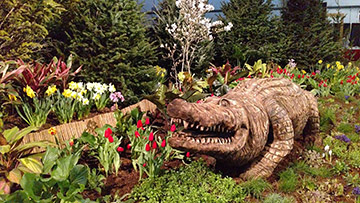 |
From London to Neverland at the Vermont Flower Show |
The Crocodile Awaits Captain Hook at the Vermont Flower Show |
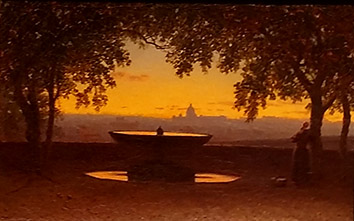 |
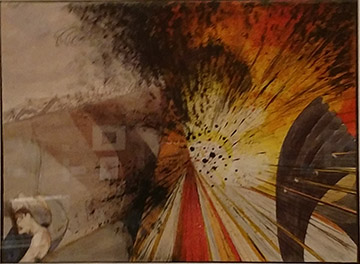 |
Saint Peter's from Pincian Hill by Sanford Robinson Gifford at the Pennsylvania Academy of Fine Arts in Philadelphia |
'Flower of Death' from the World War I Exhibit at the Pennsylvania Academy of Fine Arts in Philadelphia |
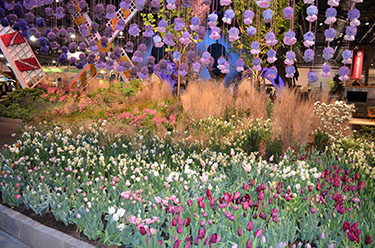 |
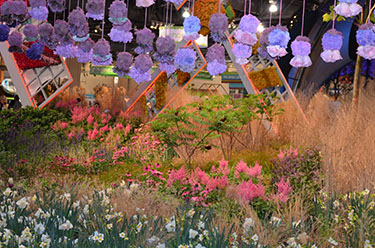 |
Exuberant Entrance at the Philadelphia Flower Show |
Another View of the Entrance |
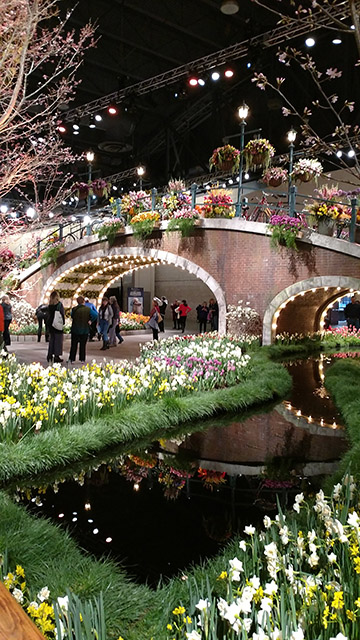 |
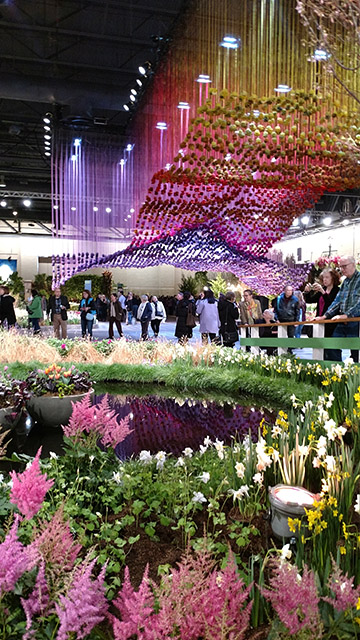 |
Entrance Bridge at the Philadelphia Flower Show |
Entrance Exhibit at the Philadelphia Flower Show |
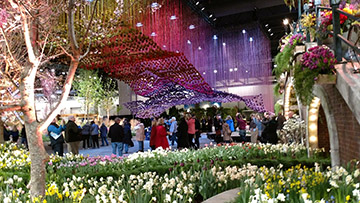 |
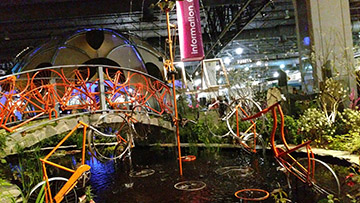 |
More Entrance Flowers at the Philadelphia Flower Show |
Bicycle Bridge and Water Feature at the Philadelphia Flower Show |
 |
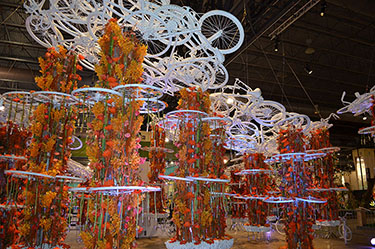 |
Reminiscences of Mondrian at the Philadelphia Flower Show |
Bicycle Mania at the Philadelphia Flower Show |
More Mondrian |
Back in our own Greenhouse spring awakes and the Meyer Lemon produces fruit |

